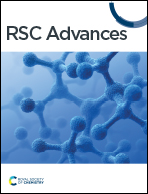Management of virulence in Pseudomonas aeruginosa and Serratia marcescens using environmentally-friendly titanium dioxide nanoparticles
Abstract
Antimicrobial resistance (AMR), a condition in which the efficacy of antimicrobial drugs in fighting microorganisms is reduced, has become a global challenge. Multidrug resistance (MDR) has been developing in microorganisms, where they can resist multiple medications. In particular, there has been a rise in MDR as well as extensively drug-resistant (XDR) strains of Pseudomonas aeruginosa in some regions, with prevalence rates ranging from 15% to 30%. The application of nanotechnology ranges from diagnostics to drug-delivery systems, revolutionizing healthcare, and improving disease treatment. We aimed to investigate the efficacy of titanium dioxide nanoparticles (TiO2-NPs) against various virulent traits of P. aeruginosa and S. marcescens. More than 50% reduction in the production of virulent pigments of P. aeruginosa was recorded following the treatment of TiO2-NPs. Additionally, elastases and exoproteases were inhibited by 58.21 and 74.36%, respectively. A similar result was observed against the rhamnolipid production and swimming motility of P. aeruginosa. The effect of TiO2-NPs was also validated against another opportunistic pathogen, S. marcescens, where the production of prodigiosin was reduced by 64.78%. Also, a roughly 75% attenuation of proteolytic activity and more than 50% reduction in swarming motility were found. In the control group, the cell surface hydrophobicity was 77.72%, which decreased to 24.67% with the addition of 64 μg ml−1 TiO2-NPs in culture media. The hydrophobicity index of microorganisms is crucial for their initial attachment and the formation of biofilms. In conclusion, TiO2-NPs demonstrated potential in a multi-target approach against P. aeruginosa and S. marcescens, suggesting their advantages in the prevention and treatment of infections. These nanomaterials could have vital importance in the development of novel antibacterial agents to combat drug-resistant bacteria.



 Please wait while we load your content...
Please wait while we load your content...